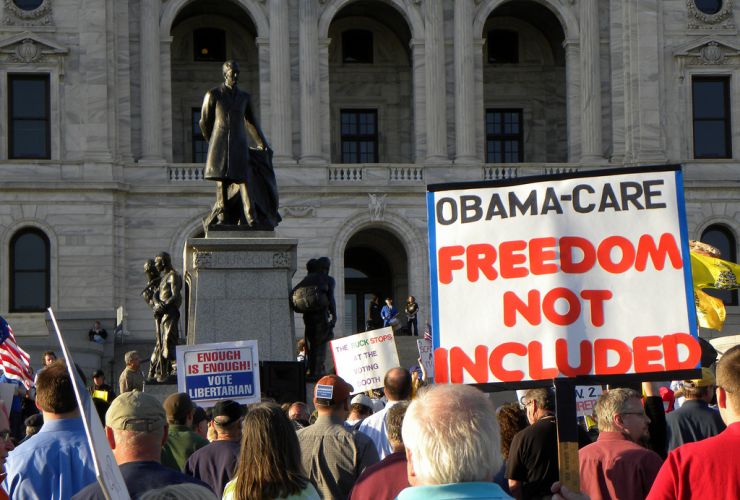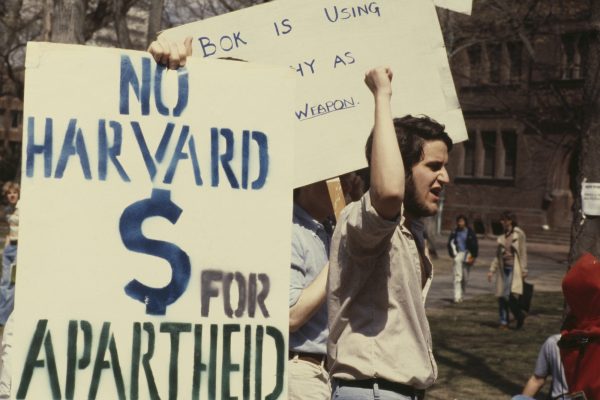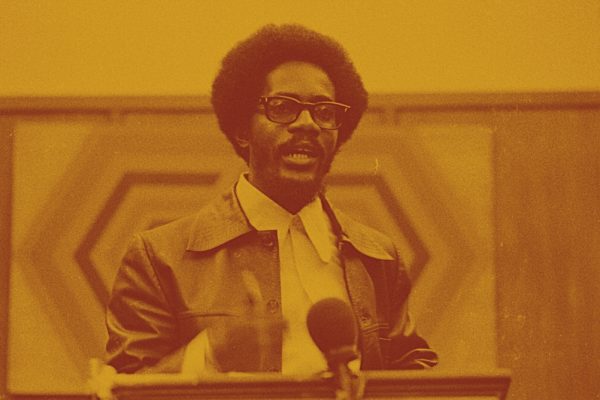As the Republican repeal of President Barack Obama’s signature health care reform barreled forward this spring, leading conservatives framed their agenda in familiar terms. Mick Mulvaney, former Tea Party congressman and President Donald Trump’s new budget director, asked why responsible taxpayers should “be required to take care of the person who sits home, drinks sugary drinks . . . and doesn’t exercise, and eats poorly and gets diabetes.”
Representative Jason Chaffetz (R-Utah) expressed the same finger-wagging sensibility with greater color: “Americans have choices. . . . So maybe, rather than getting that new iPhone that they just love and they want to go spend hundreds of dollars on, maybe they should invest that in health care.”
Obamacare was the most significant expansion of the safety net since the War on Poverty—if not the New Deal—but for over seven years, conservatives alleged that this expansion led to governmental tyranny, unnecessary expense, and a decline in personal responsibility.
Yet to the surprise of many, the proposed replacement, which included brazen attempts to gut Medicaid and dismantle subsidies and nondiscrimination provisions, set off a firestorm of resistance from ordinary Americans. Protesters jammed lawmakers’ offices, town halls, and phone lines. In crowds dwarfing the 2010 Tea Party protests against the Affordable Care Act, Americans voiced their opposition to the House repeal bill. These protests by and large called for the exact opposite of Mulvaney’s critique: an expansion of health care as a “human right.” In California statutes that would create a single-payer health care system are even now making their way through the legislature.
The protests were remarkable. But equally striking was the shift in the terms of public debate. The focus was no longer simply on the details of policy design. As one Texas protester put it, “The Republican health care bill is immoral. . . . It’s wrong. I think health care is a right, not a privilege. And I do really think people are going to die.” The protests raised fundamental issues of political morality: what do we owe each other as free and equal members of a democratic society?
The clash over health care is the most glaring example of a more widespread battle over the meaning and importance of public goods: what they are, how they ought to be provided—and to whom. The question of whether to privatize and deregulate, or to restore—and even expand—public provision is at the heart of many contemporary political, economic, and moral debates. At the federal level, the question over public provision manifests in disputes over privatizing education or slashing funds for affordable housing. On a more local level, the poisonous water of Flint, Michigan, exemplifies the toll of the larger trend of budget-cutting and privatizing vital public services.
In economic terms, public goods are defined as being nonrivalrous and nonexcludable—meaning that one person’s consumption does not preclude another’s, and that it is difficult (or impossible) to prevent people from consuming the good without paying for it. Classic examples are light and air. A second, more conventional understanding of public goods focuses on the economics of production. Goods that have high sunk costs and increasing returns to scale are likely to be underprovided by ordinary market competition. Think cable TV and landlines: the massive expense involved in laying down wiring on a national scale discourages private investment, but the benefits of a national network increase as the network grows. These conventional public goods are therefore seen as a proper domain for governmental provision.
But the battles over health care, education, and other goods underway today express a very different view of public goods, one grounded not in economic terms of efficiency and production, but rather in moral and political concepts. In this framework, “public goods” are those essential to enabling human success and well-being. Let’s call this the democratic conception of public goods. It is a democratic conception in the substantive and aspirational sense of “democracy”: these are goods that we owe to one another in a shared democratic society. In turn, this suggests that ensuring equal access to these goods is a matter of public concern and public obligation.
Viewed this way, public goods encompass much more than conventional utilities and infrastructure (such as roads, bridges, and electricity). The category also includes a wider array of “social infrastructure”—those essentials that allow for one’s full potential to be met, ranging from health care and housing to broadband Internet.
Such moral appeals to the importance of basic necessities and the need to provide them publicly and equally are familiar aspirations. But by themselves they have often been politically unpersuasive: skeptics frequently cast these demands as luxuries rather than necessities or argue that they would be too costly to provide publicly. And in an era marked by deep distrust in government, “self-correcting” free markets might seem more likely to provide such goods and services efficiently and competently.
But a democratic conception of public goods entails more than just the aspiration for equal access to basic necessities. It also includes a second, critical claim: that power in the modern economy is exercised through the control, administration, and provision of these very goods. Whether they are public agencies or private firms, providers of goods such as health care exercise control over those dependent on them. Historically this power has been used in ways that create and perpetuate racial and economic injustice. Public goods must be democratic, then, in a second sense: by ensuring the accountability and responsiveness of these providers and protecting beneficiaries of public goods from exploitation.
A democratic conception of public goods raises a related constitutive claim as well. The practical realities of who can access which goods, and on what terms, represent the codification and institutionalization of citizenship—or its denial. Access to these goods is one of the key ways our society defines the demos itself.
The democratic conception of public goods has historical roots. During the Gilded Age and the subsequent Progressive Era, the American economy was in the throes of a terrifying and painful transformation not unlike today. Industrialization generated tremendous new wealth and opportunities, but the upheaval also deepened poverty and inequality, creating crises of health, pollution, and dislocation. Many workers and communities suddenly found themselves struggling to survive and at the mercy of new forms of power, such as railroads or financiers, who dictated the fates of whole towns and sectors from afar.
As a result many Americans suddenly lacked reliable, safe, and affordable access to the basic necessities of life. The dairy industry, for example, was an area of concern for many Progressives. The logistics of delivering fresh milk to booming urban centers made access difficult, and the common business practice of adulterating milk with chalk and toxic chemical dyes (to improve its appearance) made it a mortal danger to many children.
Progressives looked to the idea of “public utilities” as a solution. Today we think of public utilities in narrow terms, such as electricity or telecom. But starting at the state and local level, reformers established utilities for everything from milk and ice to transportation and banking. In some cases, these charters converted the private provider into a state- or city-run entity, which is how modern municipal utilities started. But in others, policy reforms implemented something more tailored: varying degrees of state oversight and regulation to ensure that goods were provided fairly, safely, and cheaply. In the case of milk, for instance, Progressive Era reformers not only imposed safety standards, but also created urban distribution centers that subsidized the high cost of fresh milk.
The telecom industry was also radically reshaped during this period. As telephones became increasingly central to social and economic life, reformers engaged in a fierce political battle with private telecom monopolies over norms of nondiscrimination and equal access. By 1910 antidiscrimination rules—which required telecom companies to provide service to anyone who could afford it—were in place in nineteen states. As historian Bill Novak has argued, these Progressive Era clashes over industrial capitalism and regulation helped formulate much of our contemporary understanding and practice of democracy.
Progressive Era reformers outlined a conception of public goods that was democratic and distinctive in several key respects: it saw goods in moral terms, as necessities for human flourishing; it recognized that without public oversight, private actors could dominate certain sectors in ways that would subject communities to arbitrary pricing and barriers to access; and it employed often mundane regulatory tools at the local and national level to realize these aspirations.
Crucially, however, Progressives also framed the category of public goods, and the tools deployed to manage them, as necessarily fluid, evolving over time in response to changing technologies, social needs, and transformations in the marketplace. As Herbert Croly, Progressive founder of the New Republic, argued in 1909, “Conditions . . . vary radically in different industries; and the case of each industry should be considered in relation to its special conditions.” And those conditions can change: a sector in which provision is at first cheap and equally accessible through private providers may become exploitative or monopolized, requiring greater governmental oversight—or vice versa: a good that is a luxury today may be a necessity tomorrow.
The recent battles over net neutrality and broadband access illuminate this latter point, as the lack of broadband Internet (once considered a luxury) plays an increasingly conspicuous role in isolating communities from commerce and economic opportunity. Moreover, as the Internet assumes the role of the modern-day public sphere, in which communication, protest, and debate take place, private control over the terms of access and the transmission of data between users creates the risk of unchecked, arbitrary power within our democracy.
This is precisely why so many modern-day advocates of racial and economic justice have sought to create public utility–style regulations that would bar Internet service providers (such as Verizon and Comcast) from discriminating against some users, while also pushing for the creation of municipal broadband networks to connect underserved communities. The stakes here extend beyond cost to encompass fundamental freedoms. Without fair, cheap, safe, and universal access to certain goods—and without checks on private providers—individuals and communities can be excluded from the heart of social, economic, and political life. Public goods, in other words, are not so much about “free stuff” as they are about the “stuff that makes us free.”
• • •
Of course government provision of a public good can have negative results. Much of the public’s distrust of regulation rests on the decades-long conservative critique of government as inefficient, overly costly, and likely to be corrupted by special interests. But the democratic view of public goods reminds us that private actors can be a source of exploitation and unaccountable power.
The water crisis in Flint, Michigan, offers a glaring example of this story. After years of budget crunches, the state government imposed emergency management on Flint, which in turn sought to cut costs by switching the city’s primary water source to a private provider. But the failure to sufficiently treat the water resulted in skyrocketing levels of lead in the water, poisoning an entire community. Meanwhile the semi-privatizing of water in Flint has caused prices to spike, leading many residents to lose access altogether.
This story extends well beyond Flint: cash-strapped localities all over the country have moved to privatize their water utilities, raising similar concerns about safety, quality, pricing, and access. On average, water costs have skyrocketed by 40 percent over the last five years, a trend that could cause one-third of Americans to lose access to safe water by 2020.
The Flint crisis shows that what matters more than the identity of the goods provider—public or private—is the way in which the good is provided, and in particular, what its provision means for democratic values of access and accountability. In fact, the lived realities of public goods—how they are provided, who provides them, and to whom—represent some of the central ways in which we construct, perpetuate, and institutionalize economic and racial inequalities today.
Statements such as Mulvaney’s are emblematic of a long-standing pattern of casting beneficiaries of certain public goods as “undeserving.” In 1976 Ronald Reagan infamously popularized the pernicious stereotype of the “welfare queen,” framing racial minorities as the fraudulent and indolent recipients of excessive government benefits at the expense of hard-working taxpayers. But attacks on the “undeserving” poor have a sadly bipartisan history. From paternalistic pre-industrial welfare systems to Clinton-era welfare reform, questioning whether certain populations “deserve” help has been a touchstone for liberal and conservative critiques of welfare.
This idea of deservingness has been institutionalized in the bureaucratic administration of public goods themselves. The New Deal, for example, deliberately excluded women and communities of color from many of its labor and safety-net protections. Today state governments can set requirements for receiving basic safety-net goods such as food stamps and welfare. As a result, many of these programs involve thousands of small barriers to entry that cumulatively restrict access to essential goods and services. The simple act of claiming an entitlement is often laden with punitive and pointless conditions, such as needlessly complex paperwork, strict reporting requirements, and demeaning interviews. Despite their nominally universal and enabling aspirations, these goods are instead administered to exclude and restrict.
At the local level, such exclusion is often achieved more literally by geographic restrictions. In the backlash against the civil rights movement, for example, wealthier and whiter communities routinely seceded from more diverse localities, forming their own municipal governments with separate systems for schools, parks, and other goods. The result has been de facto resegregation of access to high-quality public goods. These communities would rather withdraw from a large, public arena than make their goods and services available to all.
These exclusionary strategies are even more glaring when seen in the context of the many hidden forms of subsidization and support that wealthier communities receive. In the health care fight, for example, critics of expanded Medicaid or Medicare gloss over the degree to which most employer-backed plans are themselves subsidized by taxpayers.
Housing offers another example. The waiting list for the Housing Choice Voucher program (commonly known as Section 8, which offer subsidies for poor families to pay rent) is so long that some cities have simply stopped accepting new applicants. We could fully fund these vouchers for an estimated $25 billion annually. In comparison, we already subsidize housing for homeowners (mostly wealthier and whiter families) to the tune of $171 billion per year through the home mortgage interest deduction and other tax benefits.
Suzanne Mettler calls this the “submerged state,” the embedding of governmental benefits in often-hidden provisions of the tax code. While such subsidies may be economically efficient in some respects, the result undermines support for public provision. After all, many beneficiaries of public support (such as those with home mortgage deductions) do not think of themselves as beneficiaries, thus allowing them to falsely valorize the free market and denigrate others as “undeserving” recipients of welfare.
This illusion of free-market efficiency and personal choice results in a predictable public goods death spiral. After initial pressures to cut taxes, local and state governments have been starved of revenue, which leads to declining budgets. This creates a justification for cutting services and outsourcing them to private contractors. Increasingly, these goods and services are also financialized—transferred to private equity investors who operate the services for profit, such as water in Flint or the private equity takeover of New York’s ambulance services. But as private actors take on more and more power to exploit and extract, the same emaciation of governmental institutions, capacities, and personnel makes it ever less likely that these providers can be overseen effectively—or that goods can be made public again in the future.
Many of these exclusionary techniques are mutually reinforcing. The imposition of austerity budgets makes it easier to justify greater barriers to access. Racializing and villainizing the recipients of benefits makes it easier to cut budgets. Hiding the ways in which wealthier communities also receive public support further reduces potential support for universal and equitable access. These mechanisms comprise a sadly routine and durable playbook for constructing economic and racial exclusion.
So far, this is a grim story. But we do in fact have the resources and tools to provide these public goods on universally accessible and democratic terms. To the extent that public goods are not provided universally, it is emphatically not because of a lack of resources or institutional capacity; it is rather because of a deliberate effort to hoard resources and access for some, exclude others, and shift responsibilities from public to private actors as a way of entrenching these distributions.
If exclusion is constructed in the administration and provision of public goods (by both public and private actors), the struggle for justice, economic freedom, and inclusion can therefore achieve much by focusing on bureaucracy.
Consider the case of housing. By some estimates, nearly 40 million households around the country are “rent-burdened,” spending over 30 percent of their income on housing. Though clearly a public good in the democratic sense described earlier, housing is not recognized as an affirmative constitutional right. Yet if we were to expand regulatory and administrative oversight of the housing sector, we could come quite close to approximating housing as a public good.
In rapidly gentrifying cities, for example, a number of important proposals are currently on the table. Reformers in New York have proposed greater regulation of the rental market, requiring a licensing system for landlords or “certificates of no-harassment” that prove landlords have not forced out current tenants before they are permitted to sell their properties. Instead of huge tax breaks to developers to encourage construction, Section 8 vouchers and other rent subsidies could also be radically expanded, and localities could provide seed land and funding for public projects. Bureaucratic enforcement of eviction could be dramatically reduced and made more tenant-friendly. Cities in the Bay Area are even considering bringing back rent control and rent stabilization.
Taken together, these provisions would effectively make housing a utility. It would still be private and would still generate return for landlords, but these returns would be modest. Furthermore, the capacity of landlords to exploit or harass tenants would be curtailed. Most importantly, housing would be more affordable and accessible as a result.
Similar strategies could also help restore the “publicness” of recently privatized goods, such as water in Michigan. For example, the Michigan Human Right to Water Act, a legislative package introduced in 2015, contains provisions that would restrict prices, establish affirmative obligations for safety, impose regulatory restrictions on shutoffs, and mandate greater oversight by state agencies, including the creation of a water ombudsman. And despite the attacks on the safety net in national politics, local governments such as New York have successfully pioneered the creation of a new public good in the form of universal pre-K, an idea that is proliferating rapidly.
This return of public goods depends crucially on the role of government, and, in particular, administrative agencies at the local and national levels. But it need not rest on a Panglossian view of what government can do. Progressive Era reformers may have had an overly optimistic view of government, operating as they did at the dawn of the modern administrative state. But even then, the successes of Progressive Era (and later New Deal) administration owed much not just to bureaucrats but to the social movements that helped to empower and create it—and ultimately to keep it honest.
Today’s task of achieving a democratic conception of public goods requires a similar effort. The FCC would not have established net neutrality, for example, without the tremendous mobilization and organizing by groups such as Color of Change and Fight for the Future. Nor would the Flint water crisis have reached national prominence without the work of activists on the ground.
It should be no surprise that efforts to reform public goods—from the water rights bill in Michigan to restoring investment in local parks, schools, and jobs programs—increasingly include measures to ensure the representation and accountability of both the government and private actors. The distribution of public goods, after all, has become another way in which we police democracy’s borders, and the public at large has a real stake in these debates.
The brazenness of modern conservatism raises (and clarifies) the stakes. Thanks to conservative control of dozens of state legislatures, public functions are being privatized at an accelerated pace. At the federal level, the Trump administration wants to dismantle net neutrality as well as slash funding for Medicaid and housing. What is at stake is not only what we owe to each other, but who we are. By fighting to make the provision of these vital goods public and universal, we assert our commitment to a broadly inclusive “we.” We help institutionalize and instantiate that imaginary community, making it real, tangible, meaningful, and—hopefully—durable.








